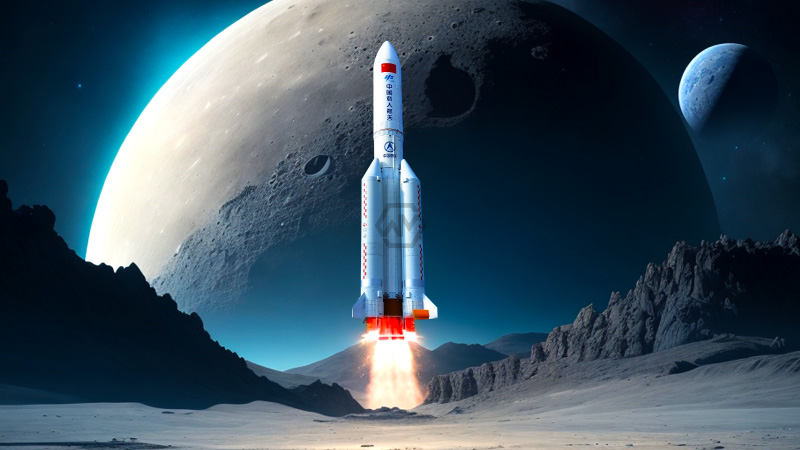- The whole mission is supposed to go on for around 53 days, the CNSA said.
- China‘s aggressive space investigation program likewise incorporates missions to Mars and space rocks.
- The Chang’e-6 space apparatus includes an orbiter, a lander, an ascender, and a returner.
China’s Chang’e-6 on Friday effectively took off for the Moon’s far side to gather and bring back examples from the lunar surface, reports said. A Long Walk 5 rocket, conveying the Chang’e-6 space apparatus, took off from the Wenchang Space Send off Site on the shore of the southern island region of Hainan on Friday evening, Xinhua news organization detailed.
While this is China’s second mission to the Moon’s far side, as Chang’e-4 was quick to visit in 2019, whenever dust first examples will be gathered from the area that never faces the Earth. The test means to gather 2 kg tests from the lunar surface. Even though Chang’e-5 2020 brought back almost four pounds of regolith, it was from the Moon’s close side.
Launch of China’s Chang’e-6
The US and the previous Soviet Association have likewise effectively assembled tests from that point and took them back to Earth.
The test likewise brings four payloads created through worldwide collaboration. Logical instruments from France, Italy, and the European Space Organization are on board the Chang’e-6 lander, while a little satellite from Pakistan is on board the orbiter.
As indicated by the China Public Space Organization (CNSA), the Chang’e-6 lunar test will land as well as gather tests from an effect cavity known as the Apollo Bowl, situated inside the South Pole-Aitken Bowl on the furthest side of the Moon.
It will require a month for the test to arrive at the lunar surface. After coming to, it will make a delicate landing. In no less than 48 hours after handling, a mechanical arm will be stretched out to scoop shakes and soil from the lunar surface, while a drill will be utilized to drill into the ground. Logical identification work will be completed at the same time.
After the examples are fixed in a compartment, the ascender will take off from the Moon and dock with the orbiter in a lunar circle. The returner will then, at that point, convey back the examples to Earth, arriving in Siziwang Flag in north China’s Internal Mongolia Independent Locale.
The Chang’e mission series, planned during the 1990s, is supposed to send off Chang’e-7 to look for water at the lunar south pole, while Chang’e-8 will review material in a similar locale to assist with building future space framework. The nation likewise plans to send run missions to the moon by 2030 and is likewise dealing with laying out a super durable, global lunar examination base during the 2030s.



